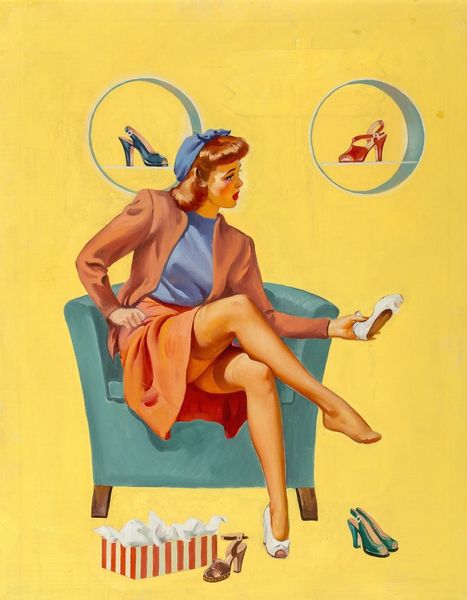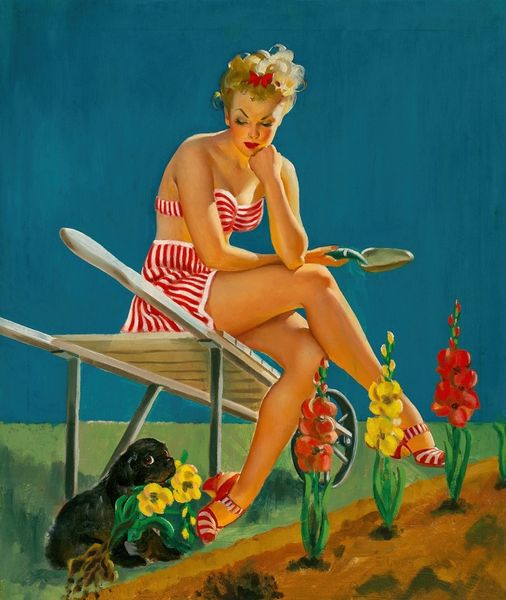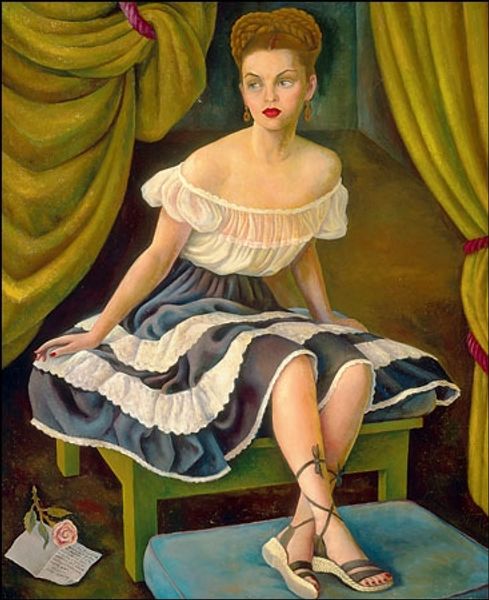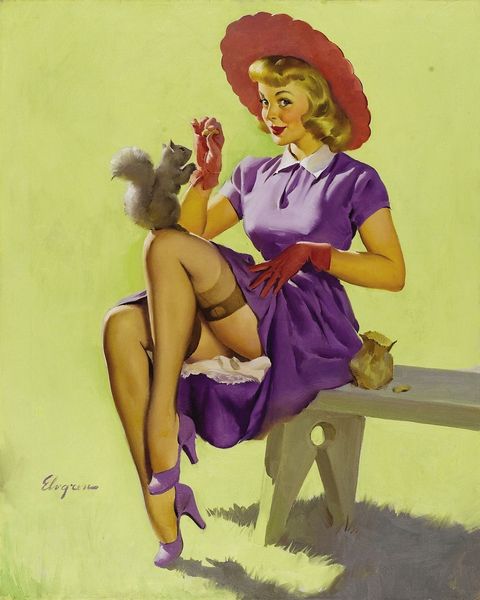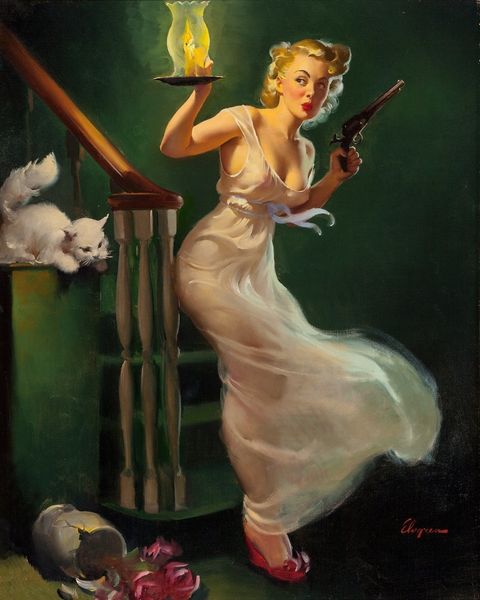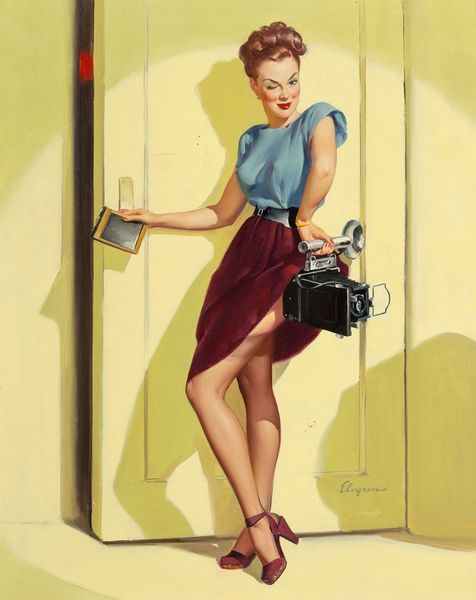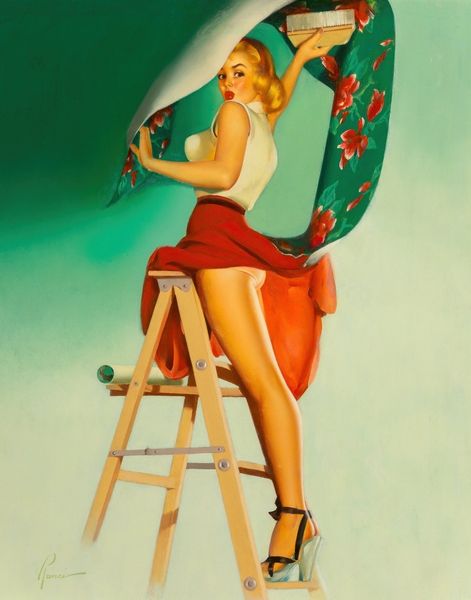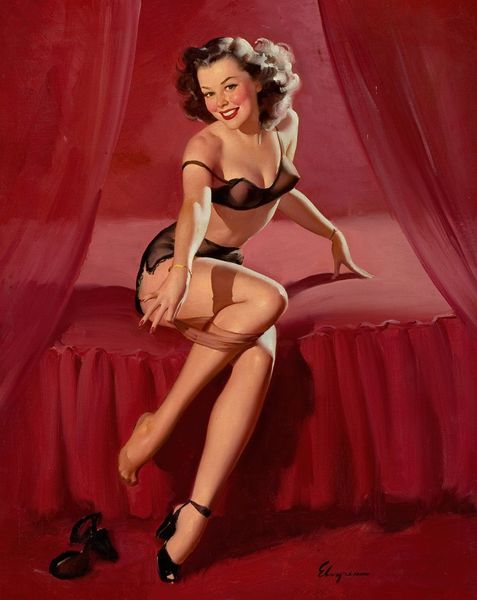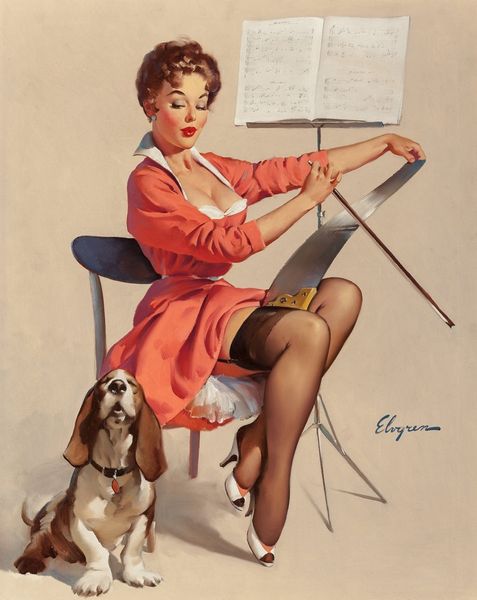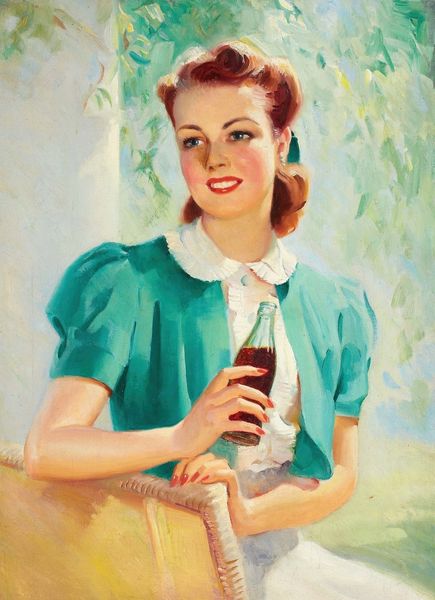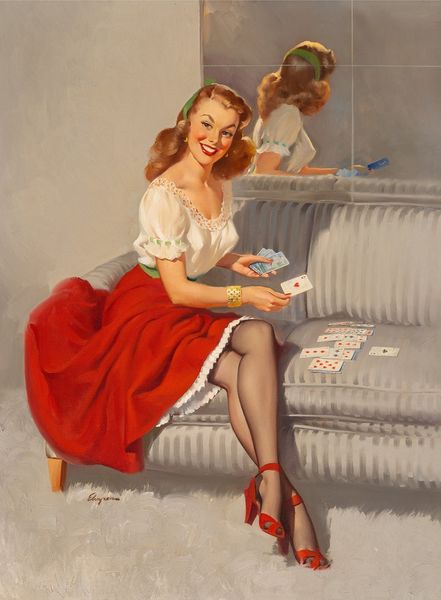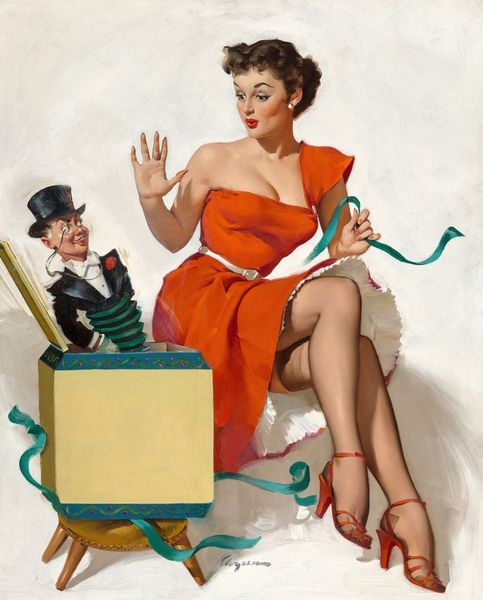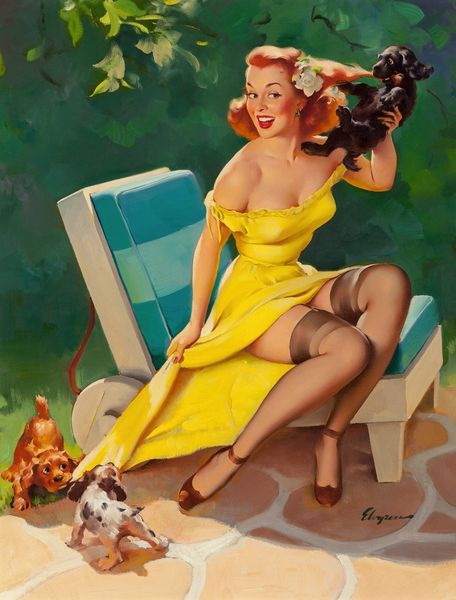
painting, oil-paint
#
portrait
#
painting
#
oil-paint
#
figuration
#
genre-painting
#
academic-art
#
italian-renaissance
Copyright: Antonio Donghi,Fair Use
Curator: Donghi's "L'altalena," painted in 1941, presents us with an intriguing tableau. What leaps out at you initially? Editor: Immediately, this muted green backdrop and the somewhat forlorn, theatrical stillness give me pause. It feels… constrained, almost deliberately anti-spectacular for a circus scene. What strikes you about its making? Curator: The canvas itself becomes a stage—it's fascinating how Donghi blends elements of high art and what one might call 'popular' entertainment. Observe the material reality of the scene: the oil paint meticulously layered, attempting to freeze a moment of manufactured performance, but to what extent? Editor: The ladder against the back also feels metaphoric… Like it wants to be climbed out of, rather than performing and training as usual. I also feel she is sort of melancholy. I’m wondering where all her laughter has gone... It looks to me like there are bars holding her in, a gilded cage for this beautiful woman. What’s the context? Curator: Indeed, this work came in a specific era. Its materials reflect mid-20th-century painting techniques. Donghi was working under very certain strictures in fascist Italy and so, as a realist painter, he treads the lines between genre painting, where things may have some obvious "appeal", and psychological portraiture. What’s going through her mind, beyond all of this “performance?” How would you interpret the objects in this “performance,” the table, the hoops? Editor: You're right; her quiet presence transcends the role itself, doesn't it? I suppose they seem props – the table looks awkward under their weight, the hoops like tricks. Like a child’s game of ‘let’s pretend’, however they seem unable to transcend the limitations of material construction. And for me this sense, together, of being trapped behind a set stage comes together to hint to all those viewers over all those years since 1941 that something’s definitely “off” or strange here. Curator: In viewing how "L'altalena" prompts us to question the performance. Not to focus just on an artform on display but to look also and just beyond. This is where that painting continues to offer new insights, doesn't it? Editor: Absolutely. Donghi's use of a woman circus ringleader as an artist reveals so much about the art of representation. Her face has no smile on her; however, I have so many in viewing such mastery.
Comments
No comments
Be the first to comment and join the conversation on the ultimate creative platform.
